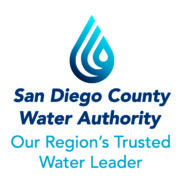Why Your Water Provider Is Fighting California’s Ban On Watering Sidewalks
It seemed like the sort of thing any drought-wary Californian could support. The state’s water cops were poised last month to pass a set of rules prohibiting what most everyone agrees are wasteful water uses –like letting water from a hose without a nozzle flow into a storm drain. But no change in California water policy ever comes easily. The State Water Resources Control Board’s proposal to impose permanent conservation rules – such as prohibiting hosing down driveways, watering lawns less than two days after it rains and washing a car without attaching a shut-off nozzle to the hose – ran into a cascade of opposition.

 Sweetwater Authority Logo 2019
Sweetwater Authority Logo 2019

